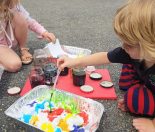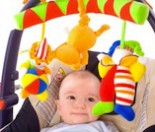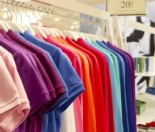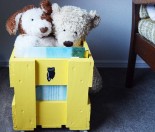When buying equipment for creative play it’s important to consider safety, and make sure the equipment is appropriate for the age and stage of your child. Staff at educational toy stores should be able to help you out with ideas in these areas, but here are some basic guidelines to set you in the right direction.
Creative play is fast becoming a mainstream child learning philosophy. Already in some New Zealand schools the Year 1 classes are moving to play-based learning. You may be beginning to think about materials and equipment for your child that supports their play-based learning.
Or you may be thinking about setting up a craft area at your place. A special place full of different materials you children can use to expand their creative talents.
Helping your child develop their critical thinking skills through creative play could just be one of the greatest gifts you ever give them.
Susan Wright in Understanding Creativity in Early Childhood, says
Composing through art, like play, is a fundamental function of early cognitive, effective and social development. Through art, children actively construct understandings of themselves and their worlds, rather than simply becoming the passive recipients of knowledge.
Creative Equipment and Materials for Pre-schoolers
Preschool age is the perfect age to encourage creativity in your child, as they have no preconceived ideas about what is right or wrong – good or bad. They just love being creative for creative’s sake.
When you choose equipment and materials for this age group consider their physical capabilities, and choose equipment that’s the right size and shape.
Things like thick crayons and brushes which they can easily grasp, big sheets of paper which allow plenty of room to practice movement control, and dough or clay which is soft and easy to mould.
Pre-school children can learn to master scissors (provided they’re child safe of course), and glues with big brushes mean they can enjoy collage. As pre-schoolers still tend to put things in their mouth, make sure all materials are non-toxic.
If you want your child to truly benefit from creative activities, it’s important to let them develop their own creative process without the aid of stencils and templates.
At this age, creative process and physical skill are the key factors to develop – technique and style come later on.
Some great basic equipment and materials for pre-school aged children are:
Jumbo Crayons

They’re amazed to see their movements come out onto paper, and by the time they start school, they’ll be using their drawings to tell all sorts of stories. Jumbo crayons are easy for young children to manage, as their fine motor skills and correct pencil grasp begin to develop.
You can buy a pack of 8 Jumbo crayons for less than $10.
Poster Paint

If you plan on using a lot at home you can buy paints in litre size bottles for about $15, but most homes will survive with 250ml jars costing approximately $6 each. Educational toy stores sell spill proof containers for poster paint, and they are well worth the $5 they cost.
These containers are re-usable, and are a lot cheaper than having the carpets cleaned every time something gets spilled.
Brushes and Sponges
If you are going to have paints at home for your pre-schooler, you’ll need some child sized brushes as well. Short stubby brushes are easy for young children to grasp, and you can buy these from toys stores or stationers for approximately $2 each.
Sponges, rollers and fancy brushes are also fun for pre-schoolers to use, and these vary in price from $4 – $10 depending on the sort you want.
Modelling Dough
Soft modelling dough allows children to make, shape, and create, while at the same time providing an opportunity to develop skills in other areas.
Accessories such as rollers, cutters and dishes encourage children to role play everyday life, and before you know it they are pretending they’re you!
You can buy modelling dough in single colour pots for approximately $4, or there are any number of elaborate sets available right up to the $50 mark.
Tables, Easels, Aprons and Accessories
When it comes to creative play, pre-schoolers are incredibly well catered for – it just depends on how much money you want to spend, and how much room you have to store it.
Most early childhood centres are well set up for creative play, so if you’re looking for some guidance, talk to your child’s daycare or kindergarten teacher about what they recommend. The sky really is the limit!
Creative Equipment and Materials for 5 – 7 year olds
By the time your child starts school, they will have developed some good fine motor skills, and will be able to use tools and equipment with finer handles, and more precise mechanisms.
In addition to the pre-school equipment and materials, some great things to introduce for 5 – 7 year olds are:
Coloured Pencils and Felt Pens
While children at this age still enjoy working with crayons, it is important that they start to develop a proper pencil grip for writing. There are a wide variety of felt pens and coloured pencils available, but generally speaking the more you pay, the better the quality.
Decorative Punches and Scissors
By 6 or 7, children start to develop the desire to make ‘something’, rather than simply draw and paint for creativity’s sake.
For many children in this age group, card making is a fun and do-able exercise and they almost set up a production line. Decorative punches and scissors allow children to punch out shapes and patterns which they can use in the design of their card.
You can find punches and decorative scissors in emporium stores for $3 – $4, but you should expect to pay $8 – $10 for ones of reasonable quality.
Air Dry Clay
Children love to make and model, and air dry clay allows their creations to be permanent without the use of a kiln.
The clay simply air dries, and it can then be painted for decoration. Air dry clay is available in different size packs, and costs approximately $12 per kilo.
Multi Media Paints
At this age, children have well and truly got the hang of painting, and you can start to introduce different sorts of paints.
Fabric paints, glass paints and ceramic paints are all easy to use and allow your child to transfer their painting skills onto different types of materials. All of these paints cost between $4 – $6 per jar.
Creative Equipment and Materials for 8 – 12 year olds
At about 8 years old, children start to develop strong opinions about what constitutes ‘good’ when it comes to art. You’ll hear whispers of ‘hers is better than mine’ (or vice-versa), and arts and crafts are something they either choose to do – or not.
If your child still enjoys being creative – congratulations – now you can really start to have some fun.
At this age, children are capable of pretty much any art or craft, so it’s important to provide them with opportunities to explore and experiment with lots of projects, materials, and techniques.
There are some really good craft kits available for this age group, and they range in price from around $15, right up to whatever you want to spend!
Some art and craft kits to explore for 8 – 12 year olds include:
- Mosaic
- Jewellery
- Fabric Art
- Ceramics
- Plaster Casting
- Knitting or Weaving
- Embroidery or Tapestry
- Pottery
- Leather Work
- Copper Work
- Card Making
- Scrapbooking
- Soap or Candle Making
- Wire Work
- Glass Painting
Above all else, give your child the space and time to be creative for creative sakes. Keep a box full of bits and pieces on hand, and try not to stress about the mess.
Creative activities are not just airy-fairy feel-good things, they help your child develop intellectually, physically and socially.
To find out more, read our article Benefits of Creative Play. Or for lots of great craft ideas check out our Creative arts and crafts section.










How creative play could be used to help all areas of a child’s development.
That’s a great question. I suggest you check out our article on the benefits of creative play for an overview:https://www.kiwifamilies.co.nz/articles/benefits-of-creative-play/ — Jarrod
How can this help areas of pies
I’m afraid nothing in this article with help in the area of pies. For that you’ll need to see our recipe section: https://www.kiwifamilies.co.nz/topics/recipes/ — Jarrod
good not too bad
Thanks for your comment. — Jarrod